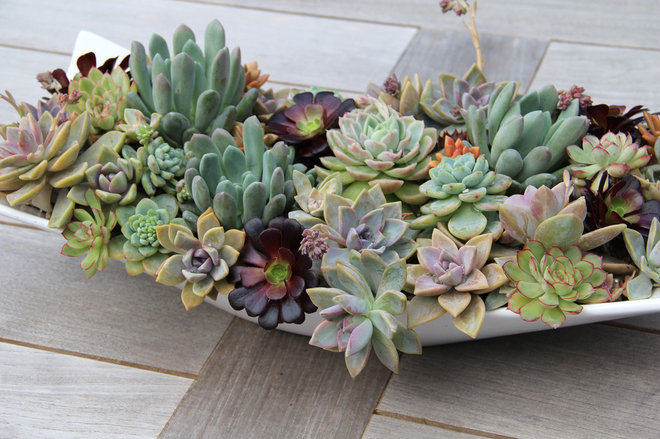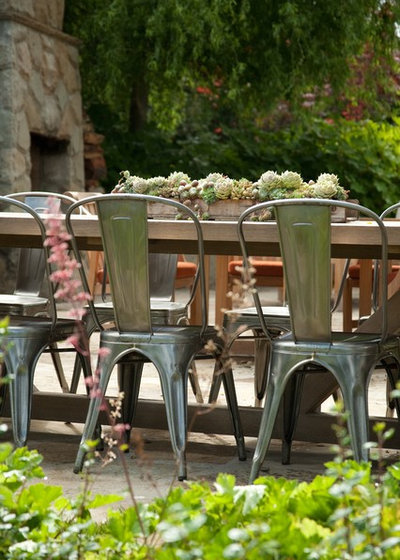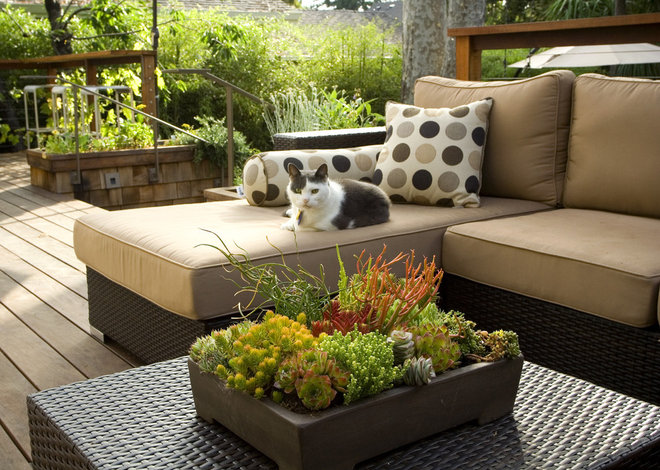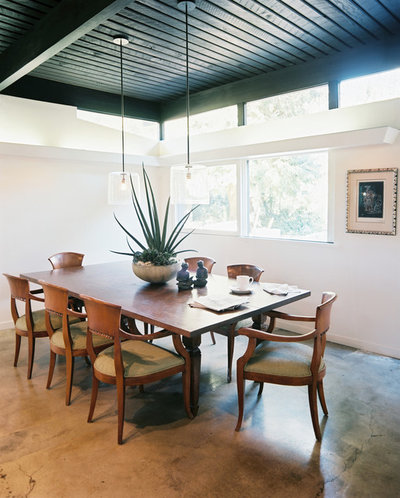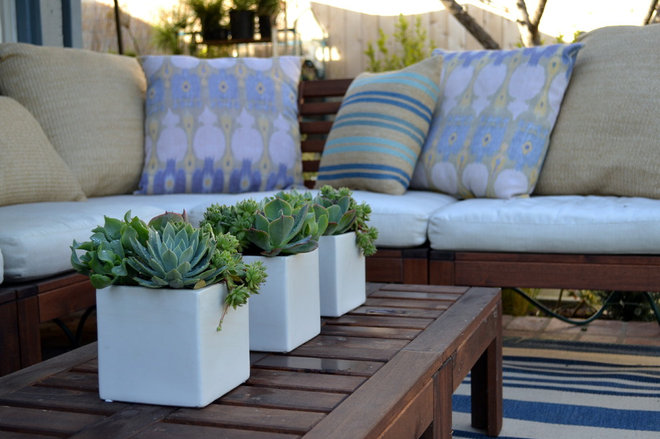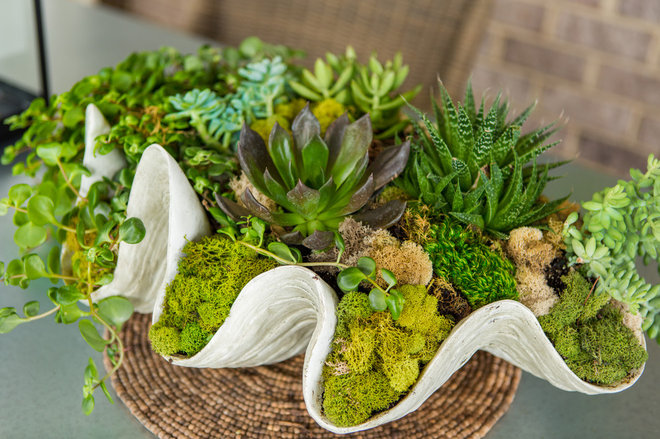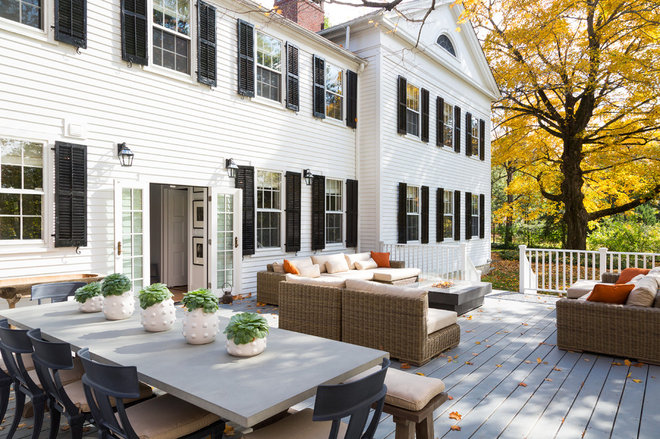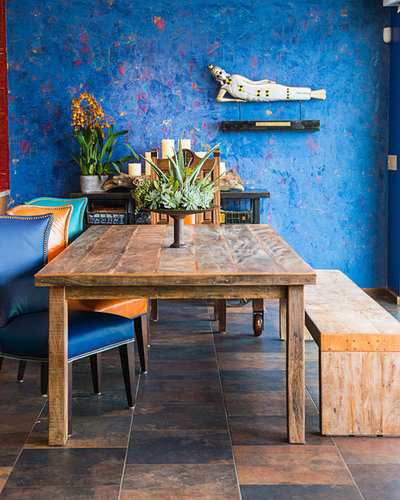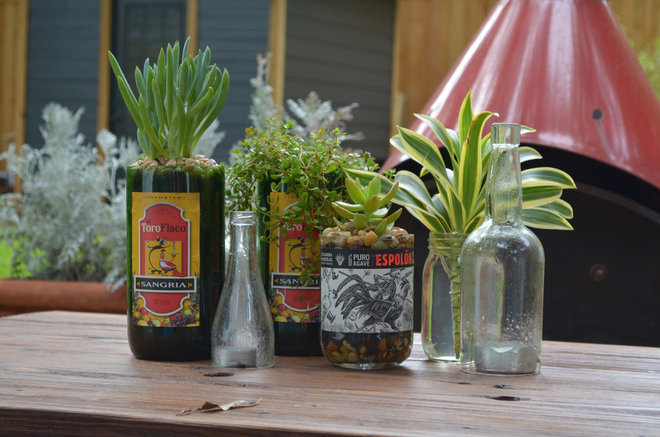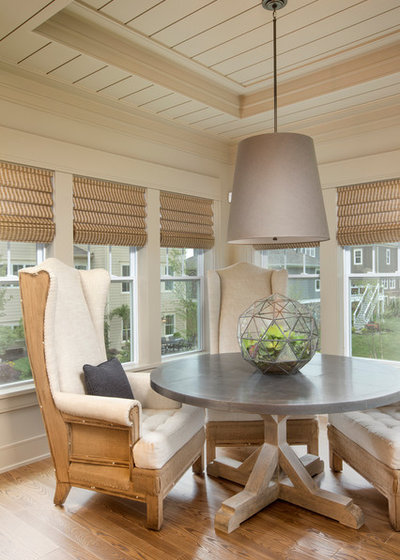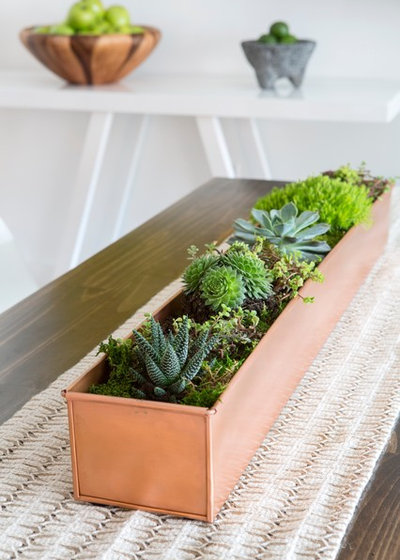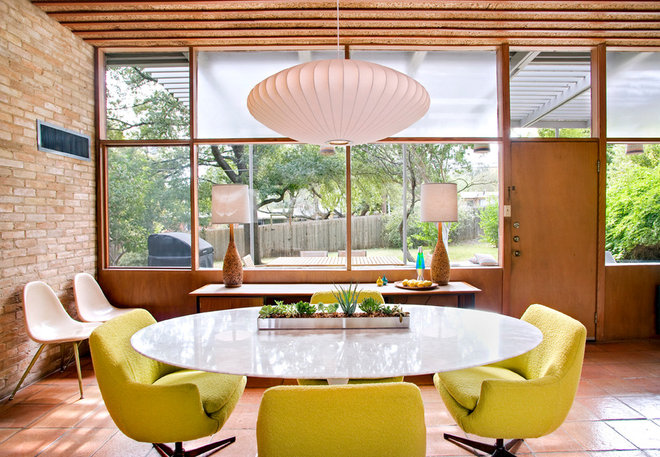10 Ways to Make Magic With Succulent Centerpieces
To re-create this look, choose a neutral-toned container, ideally with a narrow rectangular shape, and a subdued gray-green color palette for the succulents, such as pearly echeveria (Echeveriaspp., USDA zones 9 to 11; find your zone) and silver-coated cobweb houseleek (Sempervivum arachnoideum, zones 4 to 9), both pictured. The plants seen here would grow best in full sun to partial sun exposure.
This bright mix in a San Francisco Bay Area backyard includes orange ‘Sticks on Fire’ milk bush (Euphorbia tirucalli ‘Sticks on Fire’, zones 10 to 11), lime green watch chain (Crassula muscosa, zones 9 to 11), orange-tipped hens-and-chicks (Sempervivum tectorum, zones 3 to 8) and gold ‘Angelina’ stonecrop (Sedum rupestre ‘Angelina’, zones 3 to 11). All succulents pictured thrive in full sun.
When combining taller plants with succulents, be sure that they have the same light and water needs. The snake plant works well since it can tolerate very low water and variable light conditions.
Landscape designer Sacha McCrae offers a tip to re-create this lush look at home: “Fullness is key,” she says, “so we squeeze the plants in — no soil should be showing when you are finished.” She also recommends limited water and positioning the centerpiece out of direct, baking sunlight to help the tenderer succulents retain their pearly-gray color. This particular arrangement receives morning sun.
While the succulents need only minimal water, the preserved reindeer moss will retain its soft texture with misting every few days. The succulents would grow best placed on a windowsill with bright indirect light.
To re-create this look, position a trio or quintet of the same containers (perhaps varying the heights) planted with a single variety of succulent, such as rosette-forming aeonium, echeveria or tiny tree-like jade plants (Crassula ovata, zones 10 to 12). Aeonium, like the ones pictured, would grow best in filtered sunlight.
The pedestal and unusual arrangement tie in with the room’s other bohemian-style accessories, such as the Southeast Asian-inspired wall sculpture and driftwood candleholder. The succulent arrangement would require low water and bright, indirect sunlight.
Keep in mind that the succulents would need to be watered very lightly if there are no drainage holes in the bottles, and moved indoors when it’s raining. These succulents would thrive in full sun.
Although most terrariums are filled with a bottom layer of sand and charcoal to help absorb excess water, you would need to be extra diligent about not overwatering to keep succulents happy in this type of environment.
Gardens Under Glass: How to Make Your Own Terrarium
Most live mosses require more water than succulents but can be given extra moisture without overwatering the succulents by misting every few days. To get the same look without the extra hassle, choose a preserved moss instead — misting is a bonus, not required.
1. Find your container. Choose a vessel that’s relatively shallow and a good tabletop size. This can be a low plant container from the nursery, a repurposed ceramic serving bowl or a funky recycled vessel such as a large shell, an antique metal tray or a collection of jars. For outdoor containers, make sure there’s a drainage hole, as succulents rot in wet soil. For indoor containers, you can choose a vessel without a drainage hole but be sure not to overwater.
2. Choose your succulents. Depending on the look you’d like for your centerpiece, select a mix of small succulents of various shapes, sizes and colors to plant together or choose one or two stand-alone specimens to each occupy its own container. In general, it’s a good idea to include one or two low-growing fillers (like hens-and-chicks) and trailing varieties (such as stonecrop) to cover the exposed soil.
Also consider where you’d like to place your succulent centerpiece. For outdoor displays, choose succulents that thrive in sunlight. For indoor containers, use succulents such as some types of aeonium and mistletoe cactus (Rhipsalis baccifera) that can be grown in lower light.
3. Get planting. Use a quick-draining potting mix and plant succulents and cactuses shallowly — making sure that the soil does not cover their crowns or fleshy leaves. For mixed plantings, start with your largest succulents as anchors and plant smaller varieties around their base, leaving room to tuck in trailing varieties (like Sedum ‘Angelina’) at the edges of the container.
4. Add finishing touches. Cover the soil with a top-dressing material, such as gravel, sea glass, fine bark mulch or preserved moss, or fill in gaps with low-growing succulents to naturally cover the soil. The top-dressing not only gives the container a finished look but also cuts down on the need for water.
5. Care for your plants. Most succulents grow best with four to six hours of bright, indirect sunlight per day. You may need to periodically move indoor containers outdoors to give them a dose of sunshine, or choose succulents that can tolerate less light exposure for use indoors. Keep in mind that some succulents — particularly those used to growing indoors — can burn if exposed to hot, baking sun.
Water about once a week at the base of plants, avoiding overhead spraying. Allow the top 1 to 2 inches of soil to dry out before watering again.
